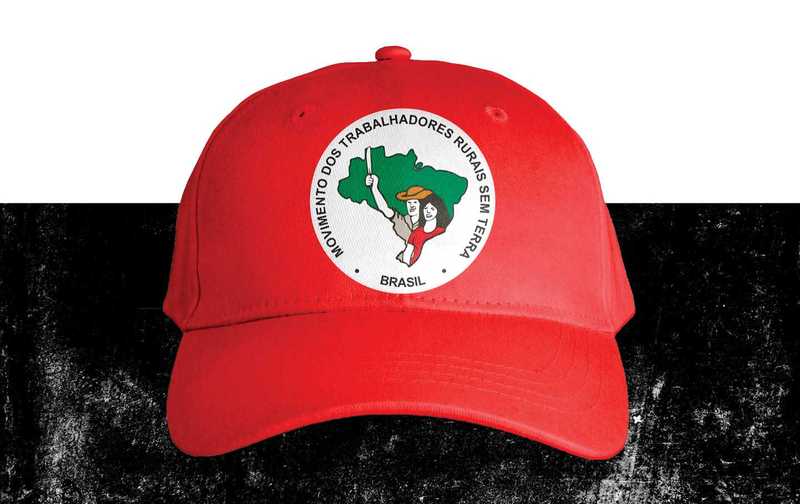by VINCENT BEVINS

Brazil’s Landless Workers’ Movement has emerged from right-wing rule stronger than ever.
The MST (Landless Workers’ Movement), Brazil’s largest social movement, fights for land redistribution by occupying unused farmland, backed by constitutional rights; its iconic red hat became a symbol of resistance during Bolsonaro’s presidency. Today, the MST navigates political tensions, pushing land reform while resisting backlash from agribusiness and conservative forces.
If you went to a trendy restaurant in São Paulo in 2021 or 2022, you were likely to see the red hat. If you went to Mamba Negra, the underground rave with DJs visiting from Berlin, or to enough art gallery openings—in short, if you hung around the country’s progressive cultural elite—you were likely to see the red hat.
The hat in question is a scarlet baseball cap depicting a man and a woman emerging from a green map of Brazil. The man raises a machete high above his head—ready to tend to the crops or, if you prefer, to go to battle. The image has been the logo of Brazil’s Movimento dos Trabalhadores Rurais Sem Terra (MST), known in English as the Landless Workers’ Movement, since shortly after its founding in 1984.
The MST pushes for land redistribution by occupying plots controlled by the country’s traditional elites or by upstart capitalists profiting from an agricultural boom. The group depends on an article in the Brazilian Constitution that mandates that land must fulfill a “social function”; if its members deem that land is unproductive or being misused, they set up camp and fight for legal recognition of their settlements. Over four decades, the MST has become the largest social movement in Latin America and perhaps in the world. It comprises as many as 2 million people across the country and has been a consistent presence on the radical left wing of Brazilian politics.
Progressive International for more
